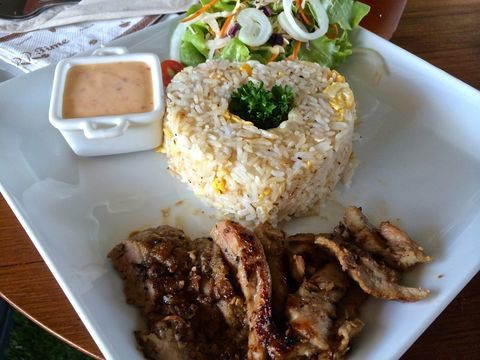Phuket Culinary Guide 2025: What to Eat, How & Where?
Phuket — the island where flavor becomes emotion
If gastronomy were a language, Phuket would speak to you hot, spicy, and with a smile. Thai cuisine here is more than food. It’s art, culture—and a gentle challenge to your taste buds. From Michelin-starred restaurants to morning markets, from Instagram smoothie bowls to ancient family recipes—the culinary map of Phuket in 2025 has become even more diverse and captivating.
What to try first?
Yes, classics like Tom Yum, Pad Thai, and Mango Sticky Rice remain popular, but Phuket’s dining scene has gone well beyond the usual.
2025 Trends:
- Fusion Thai — Thai dishes with European, Japanese, and Peruvian notes. Try Pad Thai with truffle oil or Tom Yum curry with Japanese miso.
- Seasonal vegan cuisine — meat-free but bursting with flavor. Farm-based restaurants like Blue Tree Organic Eatery or Nong Rim Farm Table.
- Low-spice Thai — for those who want taste without fire in their mouth. Most cafes now let you select spice level (even “kids” level).
Seafood: from market to plate
Phuket is paradise for seafood lovers. In 2025, the “Seafood Market-to-Table” concept is trending—you pick fresh crabs, shrimp or shellfish at a coastal market, then the chef cooks it right before your eyes.
Where to go:
- Rawai Seafood Market — iconic spot to combine shopping and dining.
- Laem Hin Floating Restaurants — eat over water surrounded by mangroves and bay views.
- Nai Yang Beach Sunset Dining — fresh oysters with wine at sunset, sound of the waves included.
For those avoiding spice or exotic fare
Thai cuisine today is customized for every taste:
- Kids and seniors — pepper-free menus.
- Gluten‑free and keto — even coconut pancakes on almond flour.
- Allergy‑friendly — allergy info listed on every item in most cafes.
New format: street food—delivery & ratings
Street Food 2.0 — same bold flavors, now more convenient. In 2025:
- Order Pad Kra Pao or Satay via app and pick up on the go.
- Check food cart hygiene ratings through QR codes.
- Takeout served in biodegradable banana‑leaf packaging.
Desserts to remember forever
Tropical sweets are pure magic. Top favorites in 2025:
- Mango bowl with rice & coconut sauce in a pineapple cup
- Che Che cold dessert — mix of ice, sweet beans, jelly & coconut milk
- Tao So buns — now filled with pistachio & yuzu
- Tropical ice cream of passion fruit & lychee — perfect beach snack
How to eat safely in Phuket
Thai people made a cult of food—and quality:
- Food poisoning is rare. Hygiene standards rose in 2025; street stalls undergo monthly health inspections.
- Water: avoid tap water but cafe ice is made from purified water.
- Sudden food changes may cause mild discomfort—start with milder dishes.
Where to eat: from markets to Michelin
Top places in 2025:
- Suay Restaurant (Cherng Talay) — Thai fare by Chef Noey.
- Tunk Ka Cafe (Phuket Town) — panoramic views & traditional dishes.
- L’Arôme by the Sea — elegant French‑Thai cuisine by the sea.
- One Chun — most atmospheric spot in Old Town.
- Villa Market Food Court (Boat Avenue) — great for tasty, family‑friendly meals at affordable prices.
Want to cook at home?
In 2025, organic markets offer even more fresh herbs, farm chicken & local spices. On YouTube you’ll find dozens of simple Thai recipes from local cooks.
Updated Tom Yum Kung Recipe
Serves 2:
- 250 g peeled shrimp
- 200 g mushrooms (champignons or oyster)
- 1 stalk lemongrass
- 3–4 kaffir lime leaves
- 2 cm galangal root
- 2 tbsp fish sauce
- 1 tsp Nam Prik Pao chili‑tomato paste
- 1 tbsp lime juice
- 500 ml chicken or vegetable broth
- Cilantro for garnish
Boil broth, add bruised lemongrass, galangal and kaffir leaves. After a couple minutes add mushrooms & shrimp. In 3–4 minutes add sauces, lime juice & Nam Prik Pao. Do not boil after shrimp are added. Garnish with cilantro.
Phuket is an island to taste, not just to see
Each plate tells a story—of family, village, region. Try it, and perhaps one spoonful of Tom Yum will tell you more than any tour.
Bon appetit and enjoy your gastronomic inspiration!



